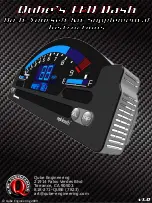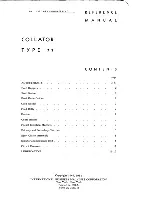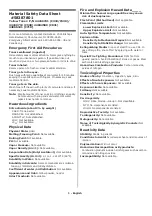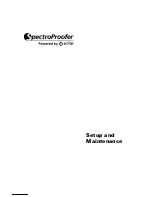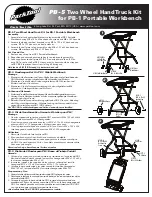
A B O U T T H E A L T I M E T E R
bicycle is transported. The wheel must be turning before the
Altimeter 50 will accumulate altitude.
Non-Climb Altitude Changes.
The Altimeter 50 is
designed to disregard dips in the road of 30 feet or less.
When you start a ride, the first gain will not be recorded until
you exceed 30 feet; then subsequent gains
will be added in
10 foot increments. If the trip and total climb displays
accumulated every small change in altitude, their informa-
tion would not be meaningful. Minor rises and depressions
in the road, and atmospheric variations, would add to the
trip and total climb readings and obscure the true altitude
gain.
Accuracy.
Although the Altimeter 50 is temperature
compensated, large, rapid temperature changes can affect
the altitude reading by up to 70 feet. Within a few minutes
the altimeter will stabilize variations such as those caused by
taking the unit outside from a heated room in winter. Wind,
rain, and humidity do not affect altimeter accuracy. Atmos-
pheric pressure changes during a ride will affect the dis-
played altitude by less than 50 feet and the amount of
accumulated altitude change by less than 1%.
Climb accumulated on a steady grade will have less
than a 1% error. Two riders covering identical rolling
courses may note up to a 4% difference in accumulated
climb–one Altimeter may just detect a dip that another
misses because it started measuring from a different point.
What You Will See.
When you measure a familiar
climb or descent, the actual gain or loss will usually be
what you expect. On hilly rides you may be surprised at
the amount of climbing you have done. On flat rides, even
if there are highway underpasses and undulations in the
road, you will record very little climb. While you ride, if
you compare altitude with another Altimeter, the readings
will track each other within 50 feet.
Using the Altimeter 50 as a Barometer.
When
the Altimeter 50 is kept in one location, an altitude gain
indicates lower barometric pressure; an altitude loss
indicates higher pressure. Each 10 foot change on the
Altimeter equals .01 inches of mercury on the barometer.
12
I N S T A L L A T I O N
I N S T A L L A T I O N
Transmitter.
Remove the front wheel. The three-
prong transmitter ring supplied snaps on the right hub
flange of most 36 spoke wheels. For 32 spoke wheels,
use a 4-prong transmitter available separately, or
attach with ties (see next section). Reinstall the wheel.
Tools.
A small screwdriver, scissors, and a wrench
to remove the front wheel if it does not have a quick
release hub.
Transmitter–Cable Tie Method.
If the ring does
not snap on the hub flange, cut off its prongs. Attach it
to the three nearest spoke crossings with cable ties.
Center the ring while gradually tightening the ties. Trim
the tie ends and reinstall the wheel. A rear wheel
transmitter kit is also available separately.
Receiver.
With the receiver in front of the fork, slip
its jaw over the narrowest part of the fork tip. Adjust the
receiver so that it is as close as possible to the transmit-
ter. Thread a cable tie through the hole in the mounting
jaw and around the fork. Pull it very tight and trim the
excess.
13
14
Transmitter
Tie
Spoke
Crossing
Tie
Tie
Receiver
Prong
Transmitter
Hub Flange
Receiver
Mounting Bracket








